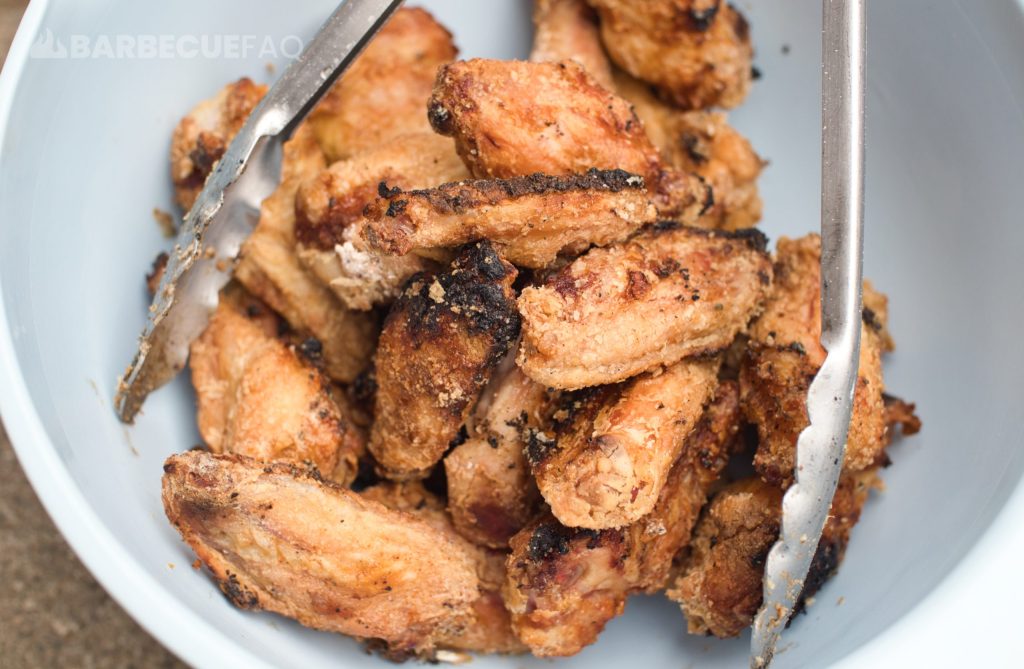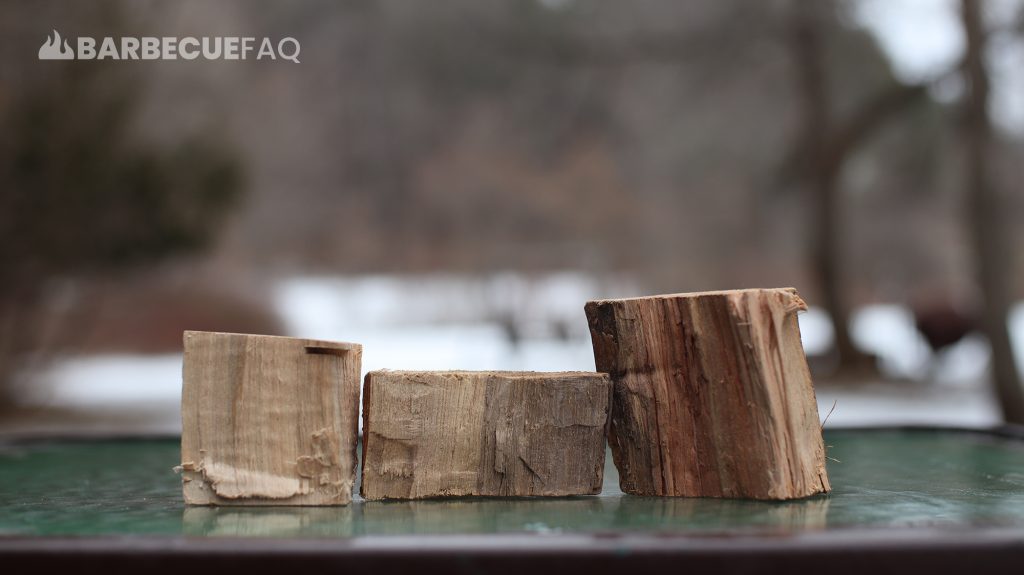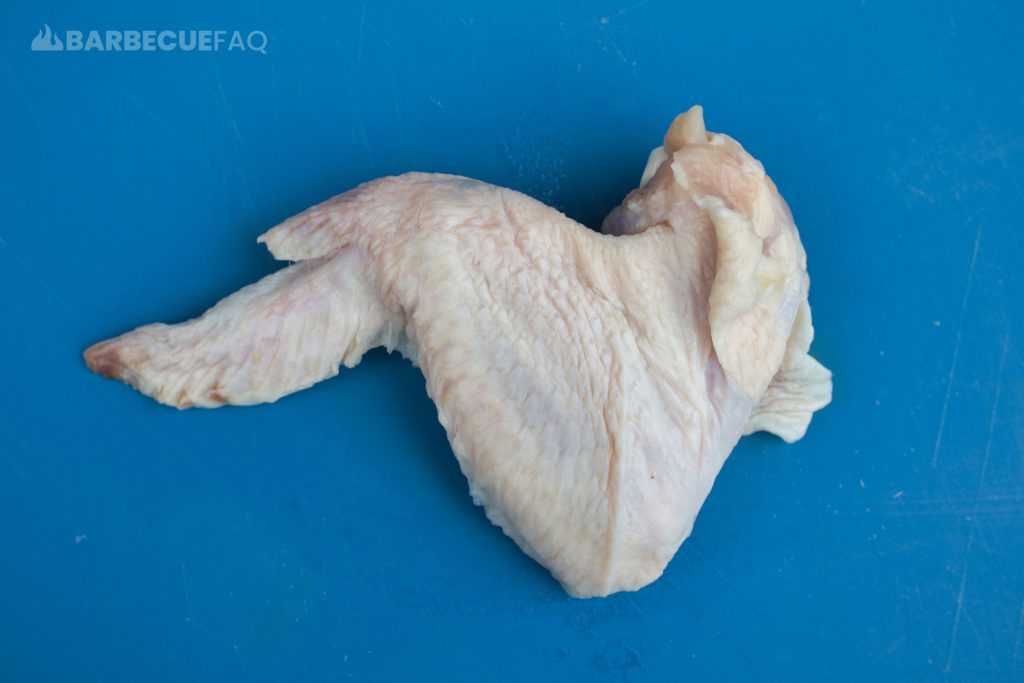1. Remove the Giblet Bag and Pop-up Timer
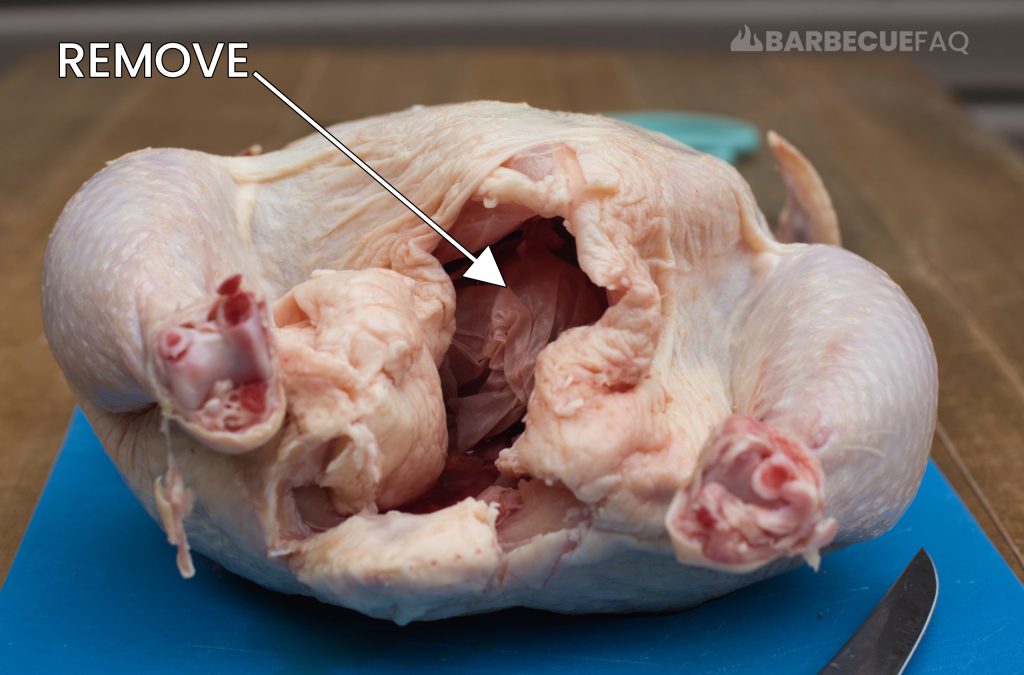
The giblet bag contains parts of the chicken that most folks would consider offal – namely the gizzard, mechanical stomach, liver, heart, etc.
Similarly, I also remove the pop-up timer if the bird has one in it.
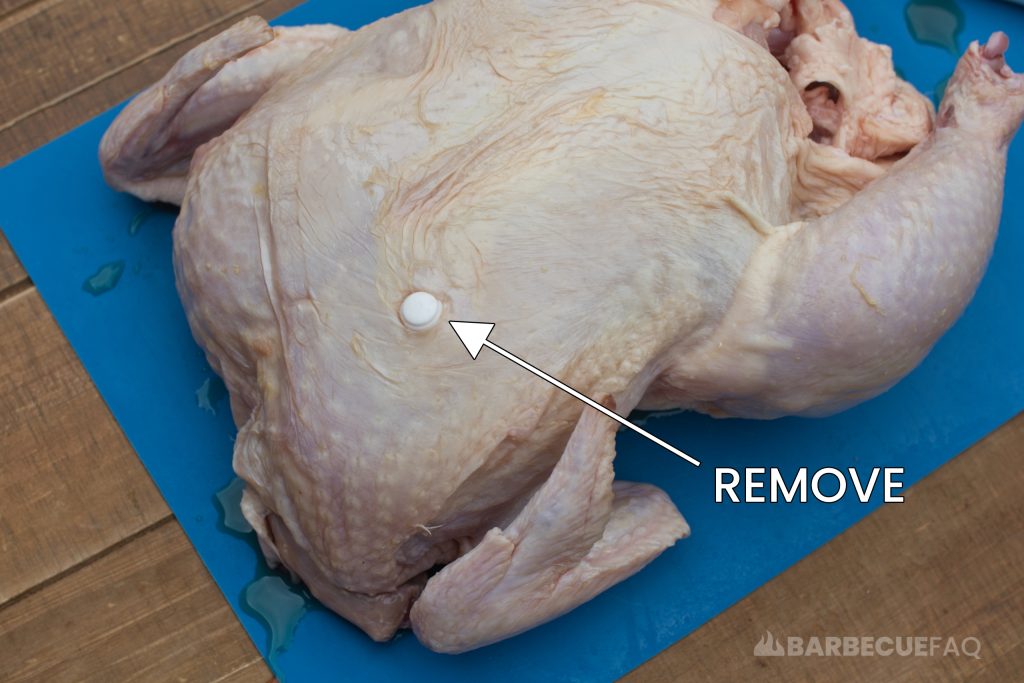
Both of these may not be present in your bird. However, they’re pretty common with Roaster chickens (which are around 5+ lbs). With a bird like a fryer or broiler they’re less common (which are around 2 – 4.5 lbs).
2. Pat Dry the Surface of the Chicken
Aside from making the chicken easier to work with, it also helps with making the skin crispy.
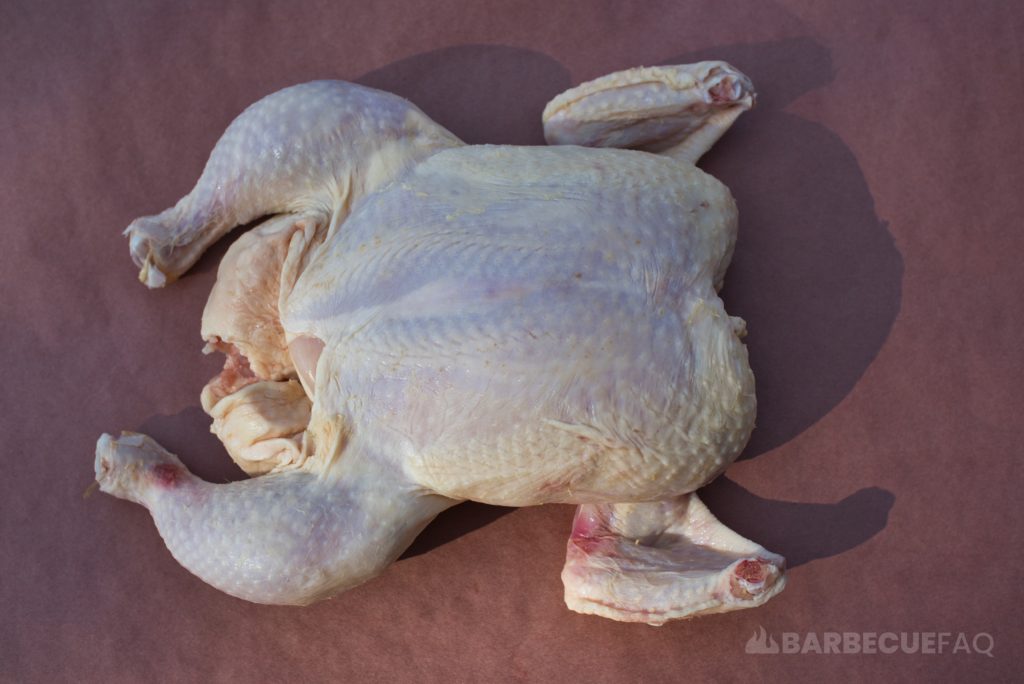
With chicken something that a lot of people struggle with is achieving:
- Breast meat that is cooked evenly with the rest of the bird.
- Crispy skin.
Pat drying and butterflying helps to address both of these issues.
3. Remove the Backbone w/ Kitchen Shears
Start with the whole chicken so that the breast is facing the cutting board and the backbone is up.
You then want to use your kitchen shears to cut parallel to the tailbone – both on the left and right of it – to remove the backbone.
I find that alternating between both sides is helpful. Mainly because the ribs keep the backbone straight, which makes cutting easier.
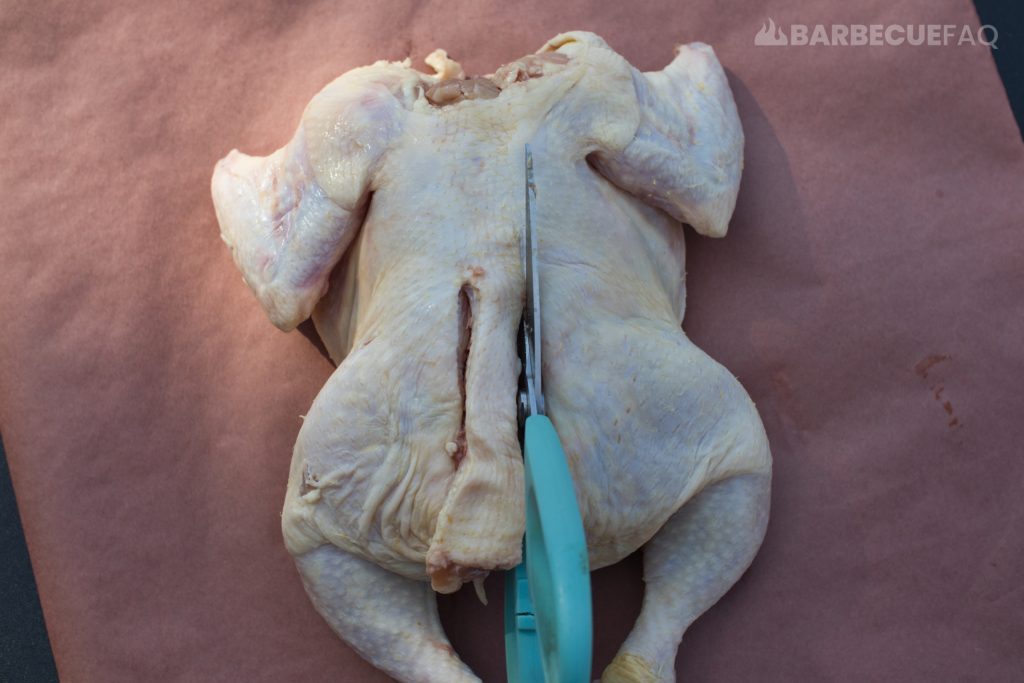
4. Wipe the Inside and Remove Kidneys
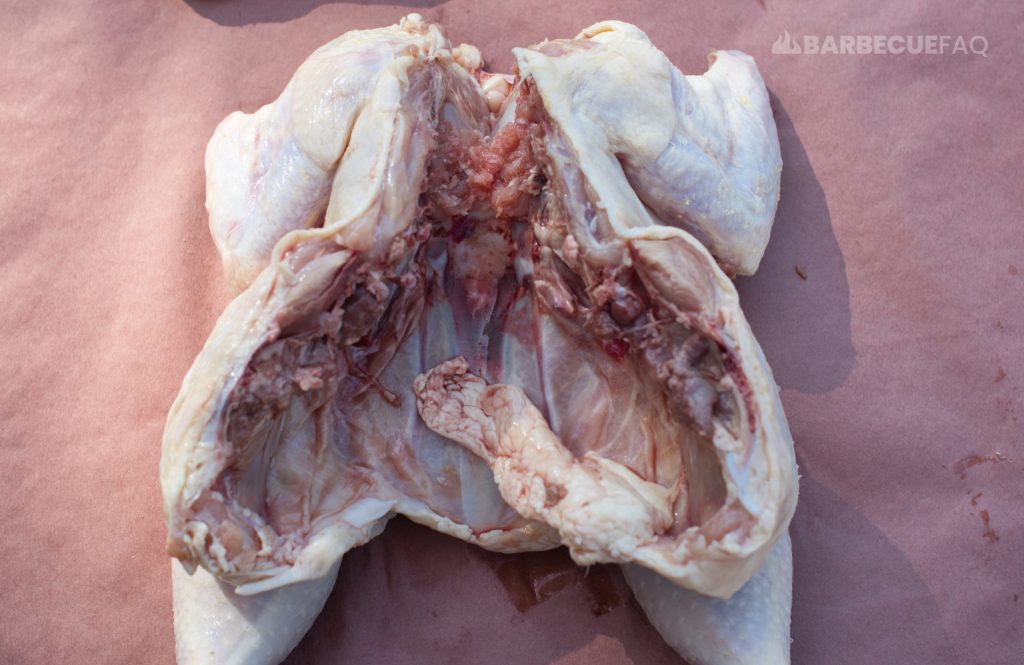
Sometimes the inside of the bird will have entrails that I prefer to remove, namely parts of the kidney that are left near the thigh meat.
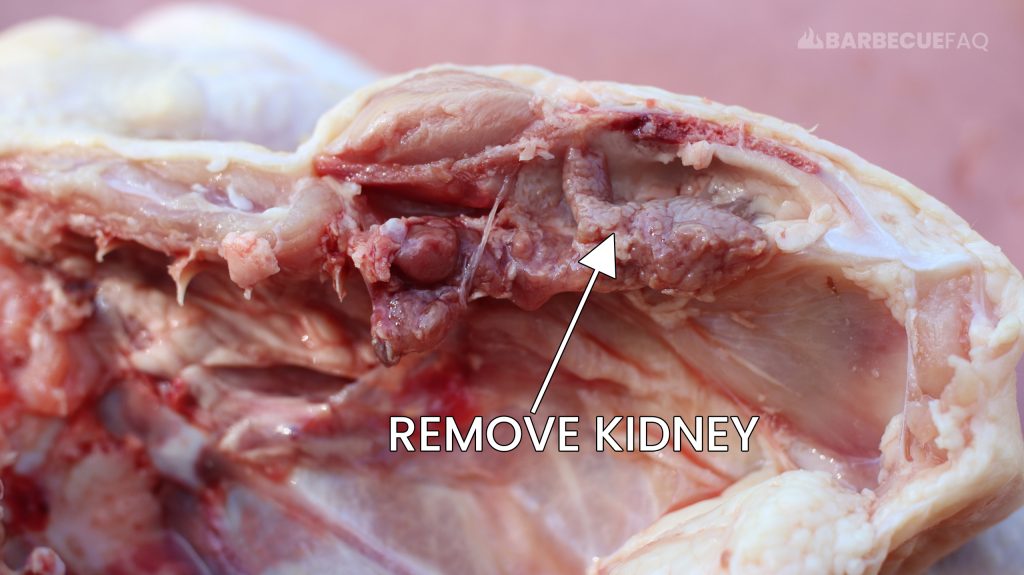
I find that paper towel works well to take the remnants out.
If they’re giving you a hard time, you can use your knife to scrape them out.
5. Remove Fat Globules and Scraggly Skin
Typically the thighs will each have a large piece of fat that extends from them.
\Use a sharp knife or kitchen shears to remove it.
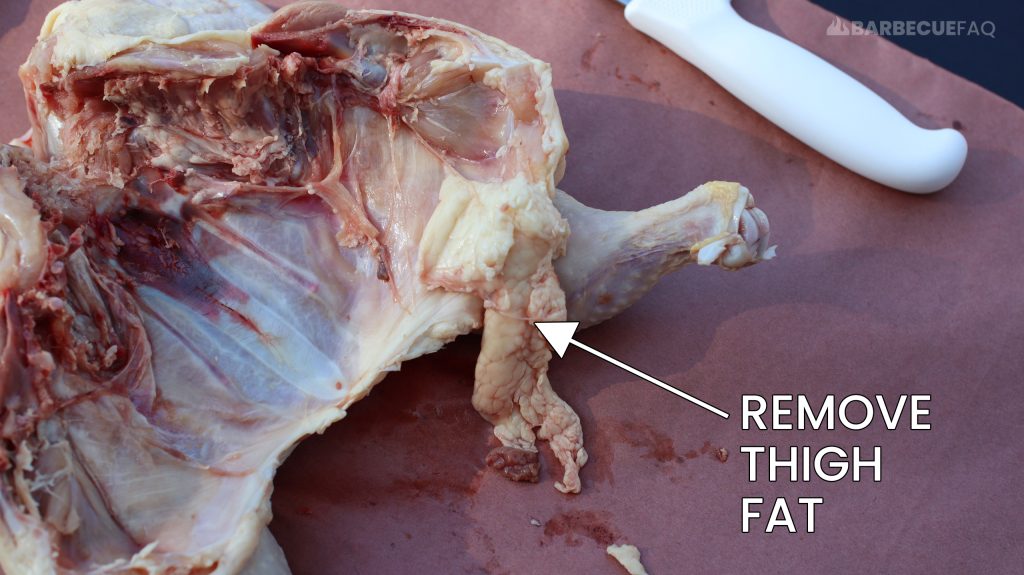
Similarly, the breast will typically have scraggly skin and exposed fat near where the neck would of been; Use a sharp knife or your kitchen shears to remove this.

You want enough skin so that it covers each breast; Any excess fat also isn’t necessary and likely won’t render.
The small bit above I trimmed with my kitchen shears.
Here’s the inside of the bird with the excess fat and kidneys removed:
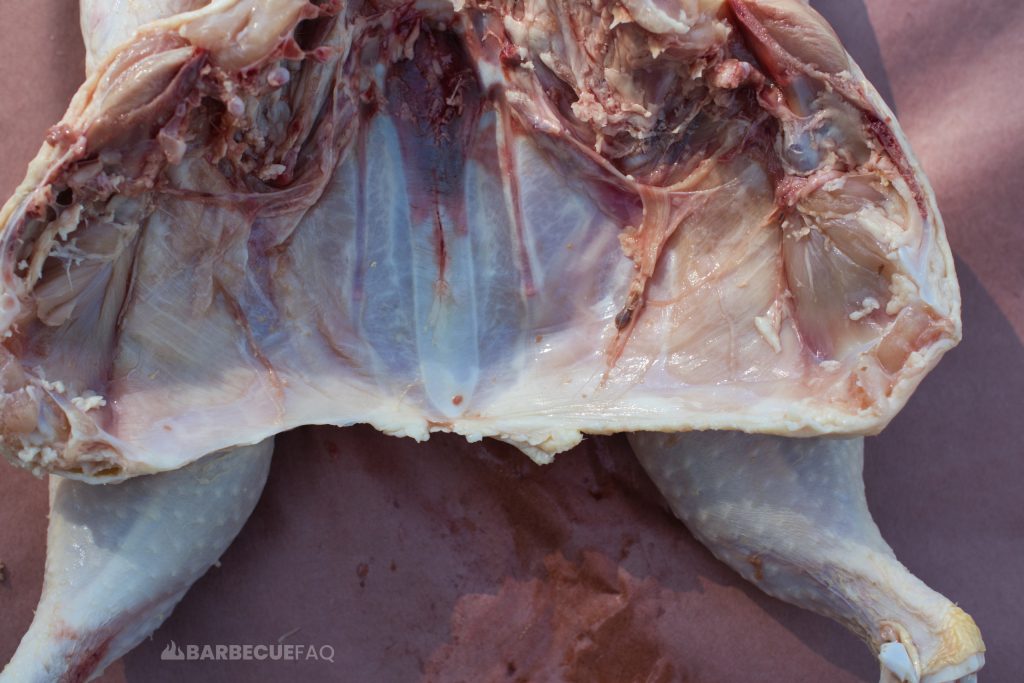
6. Flattening the Chicken by Breaking the Clavicle
There are 2 methods people use to flatten the chicken.
- Pressing your hands into the breast meat until you hear an audible crack from the clavicle breaking.
- Breaking the clavicle with kitchen shears.
I first like to make an incision with a sharp knife into the meat. As indicated by the dotted white line:
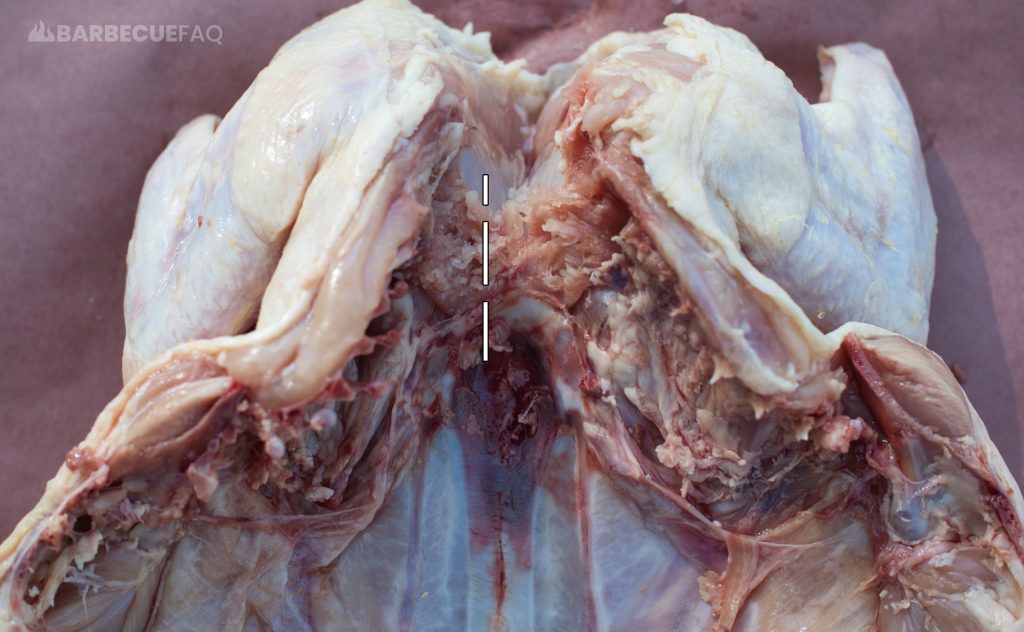
This helps expose the clavicle so that I can get under it with my kitchen shears.
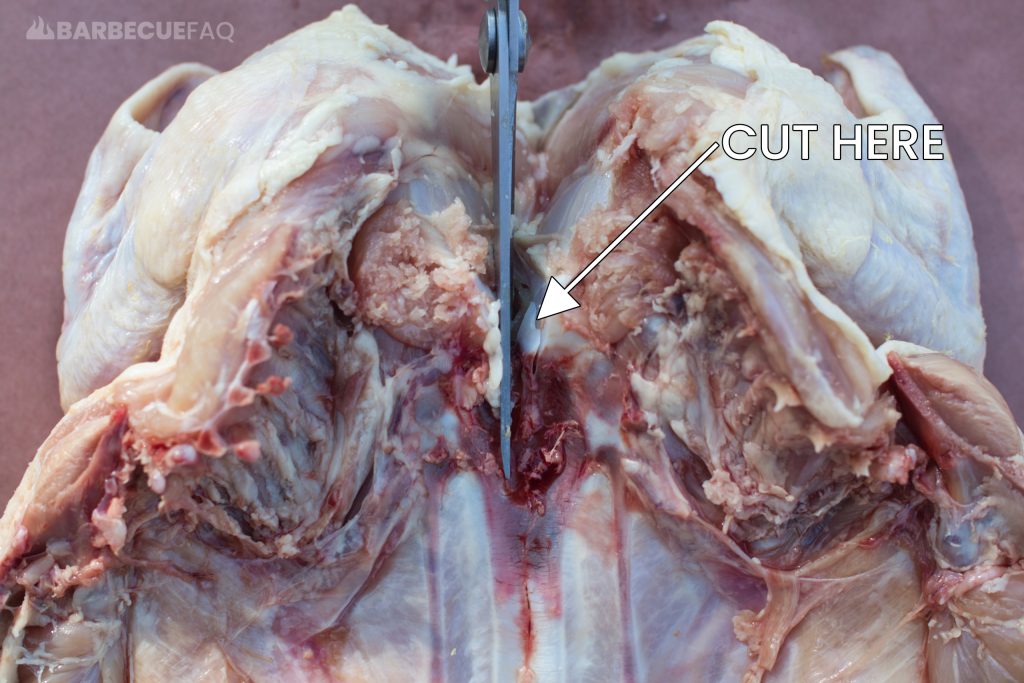
Just to get a better visual of what this looks like:

We can now flip the bird over to verify that the bird is laying flat and that it’s spatchcocked:
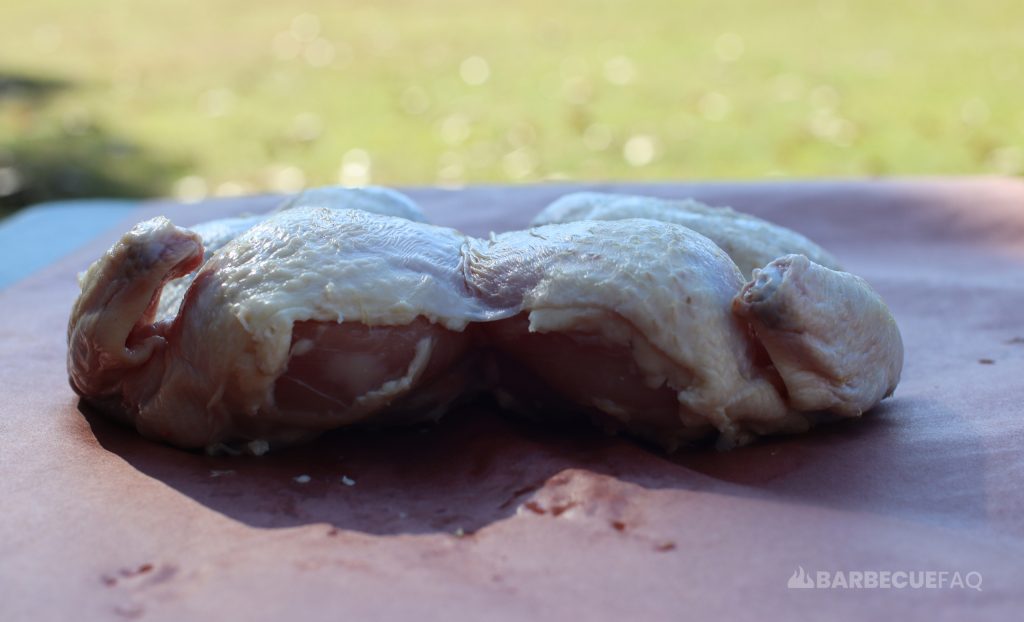
The bird lays flat and is now considered butterflied.
Here’s an alternative view of the bird – top down:



